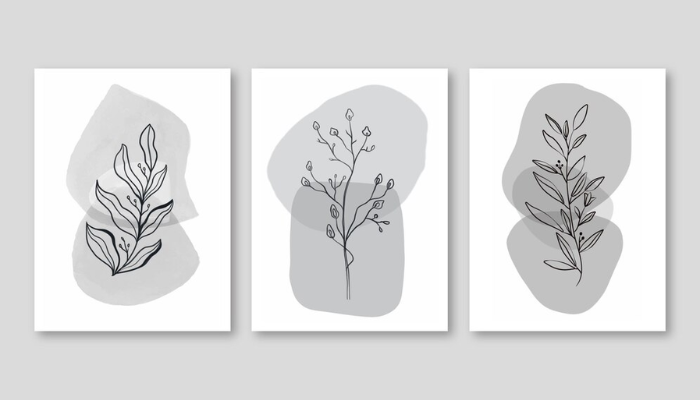

In a world saturated with constant stimuli, distractions, and information overload, finding space for creativity can often feel like a challenge. Minimalism, which is typically associated with reducing material possessions, can also be applied to the creative process, helping individuals focus on what truly matters and unleash their creative potential. By simplifying our environment and workflows, minimalism fosters a mental space conducive to inspiration and creative expression.
In this article, we will explore how embracing minimalist principles can enhance your creativity, leading to more clarity, focus, and artistic output.
Creative minimalism involves the application of minimalist principles to your creative environment and process. It’s about simplifying the surrounding chaos to encourage the freedom of thought and creativity. The essence of creative minimalism lies in the concept of removing distractions, unnecessary tools, and clutter so that we can focus on the essentials and truly unlock our creative energy.
Minimalism, in this context, is not about restricting yourself or limiting ideas. Instead, it’s about focusing on what adds value to your work and eliminating the elements that hinder the creative process. A cluttered workspace, a busy mind, or an overcomplicated workflow can stunt the flow of creativity. Creative minimalism encourages us to adopt a more thoughtful and deliberate approach to how we spend our time and energy.
Adopting minimalist principles can bring several benefits that help boost creativity:
When we are surrounded by excess, whether it’s too many objects, tasks, or thoughts, our ability to think clearly becomes compromised. Minimalism allows us to clear away the mental and physical clutter, making room for new ideas and creative thinking.
A minimalist environment and routine help eliminate distractions, enabling deeper focus on the task at hand. When we limit the number of things we have to manage, our mental energy can be directed entirely toward creativity, instead of constantly juggling multiple stimuli.
Creative minimalism fosters efficiency. By eliminating unnecessary steps and focusing on essential tasks, we streamline the creative process. With fewer decisions to make regarding our workspace, tools, or schedule, we can spend more time producing meaningful work.
A simplified environment tends to promote mental clarity. When the space around us is peaceful and uncluttered, we are more likely to experience moments of inspiration and gain new insights. Minimalism in creativity allows for clearer thinking, enabling ideas to flow freely.
If you want to use minimalism to boost your creativity, the following strategies will help guide you:
The first step is to declutter your physical environment. A clean and organized workspace is essential for fostering creativity. Keep only the tools and materials you need at arm’s reach, and store away anything that does not directly contribute to your creative work.
By organizing your workspace, you create an environment conducive to creativity and focus.
Setting time limits can help you work more efficiently and creatively. Instead of giving yourself endless hours to perfect a task, set a specific time limit to encourage yourself to focus and avoid overthinking.
One of the key principles of minimalism is to focus only on what adds value to your life or work. The same applies to the creative process. Eliminate tasks that distract you or aren’t essential to your project.
By eliminating distractions and non-essential tasks, you create space for more meaningful and productive work.
Minimalism encourages us to focus on fewer things at once. When it comes to creative projects, this can mean taking on fewer endeavors but with greater dedication and attention.
By narrowing your focus to fewer projects, you can pour your energy into them, leading to higher quality and greater satisfaction.
Another way to embrace minimalism in the creative process is by simplifying the tools you use. Rather than using every tool available, choose the few that are most effective and work best for your style.
Simplifying your creative tools allows you to focus on your craft rather than getting distracted by trying to keep up with the latest trends.
A cluttered mind can hinder creativity. Practicing mindfulness or meditation can help clear mental clutter and improve focus, allowing you to approach your creative projects with clarity and intention.
Mindfulness helps you become more aware of your thoughts and emotions, allowing you to tap into your creative potential.
Throughout history, several influential artists have embraced minimalist principles, both in their work and their lives, leading to groundbreaking creativity:
These artists show that embracing minimalism can lead to innovative and impactful work.
Creative minimalism is not about restricting your ideas or limiting your artistic expression; rather, it’s about creating the right environment for your ideas to flourish. By eliminating distractions, simplifying your workspace and tools, and focusing on fewer, more meaningful projects, you can unlock your creative potential and produce work that resonates deeply with you and others.
Minimalism encourages you to embrace what truly matters in your creative process, leaving behind the excess that inhibits your flow. By simplifying your life, you give yourself the mental space to innovate, create, and express yourself freely.
So, if you’re feeling stuck or overwhelmed, try simplifying your approach to creativity — less really can be more when it comes to unleashing your fullest creative potential.